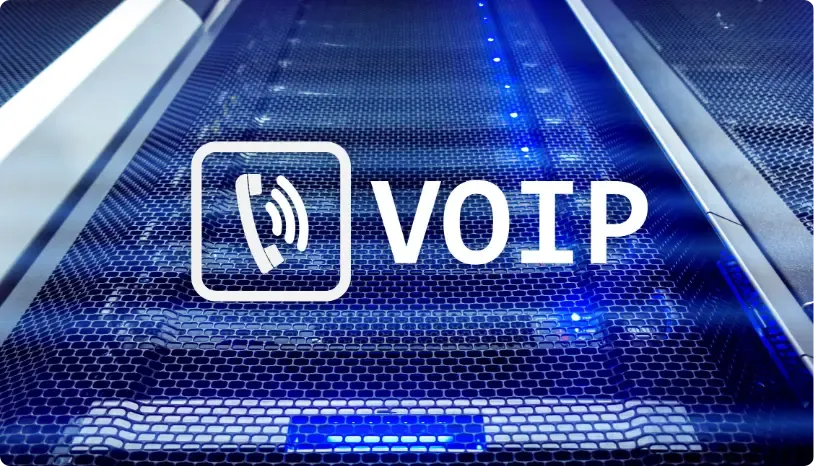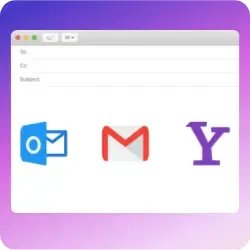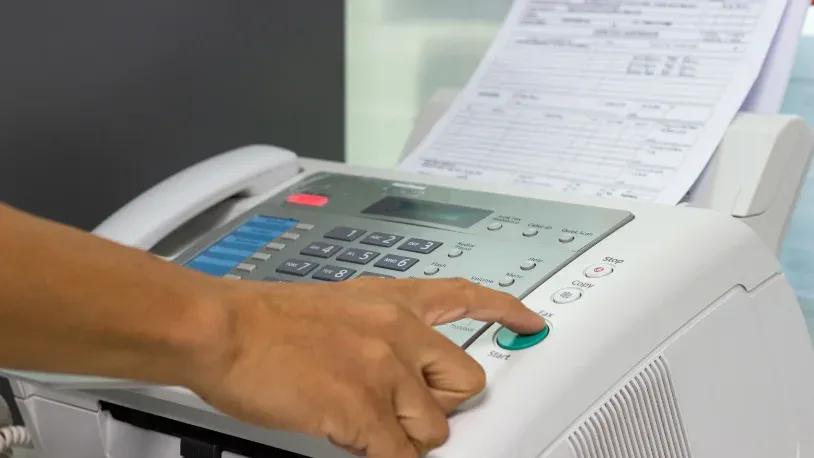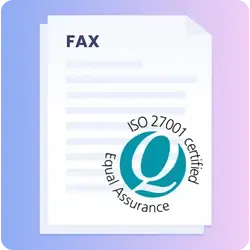Table of Contents
Are you tired of dealing with the frustrations of your current fax setup? Or perhaps you’re considering ditching your old fax machine altogether? Two popular fax options today are online fax and VoIP fax. Both have their own unique advantages and drawbacks. In this blog, we’ll explore the differences between these technologies and help you determine which one suits your needs.
What Is VoIP Fax?

VoIP (Voice over Internet Protocol) fax, sometimes referred to as internet faxing, uses a VoIP network to send and receive faxes. It allows businesses to use their existing VoIP phone systems to handle fax transmissions, often via an analog telephone adapter (ATA) or software solution. Learn about fax over IP.
Pros & Cons of VoIP Fax
Pros of VoIP Fax
Cost Savings for VoIP Users: Leverages existing VoIP infrastructure, minimizing additional costs.
Ease of Transition: Works with traditional fax machines using an ATA (Fax Voip adapter), making it easier for businesses transitioning from analog systems.
Reliable for Low-Volume Users: Provides a simple solution for occasional faxing needs.
Cons of VoIP Fax
Complex Setup: May require additional hardware or configuration of VoIP systems.
Compatibility Issues: Not all VoIP systems work seamlessly with faxing.
Dependent on VoIP Stability: Call quality and fax success depend on the reliability of the VoIP service.
What Is Online Fax?
Online fax, also known as efax, allows users to send and receive faxes through the internet without requiring a traditional fax machine. Documents are typically sent via email to fax or a dedicated online fax platform, with faxes received as attachments in the recipient’s inbox. Businesses can also integrate fax with their business systems using a fax API to send and receive directly to their business software.
Pros & Cons of Online Fax
Pros of Online Fax
Convenience: Accessible from anywhere with an internet connection, making it ideal for remote workers.
Cost-Effective: No need for hardware or phone lines; only a subscription or pay-per-fax page.
Environmentally Friendly: Reduces paper and toner usage.
Integration Options: Many online fax services integrate with email, cloud storage, and business software like CRMs.
Cons of Online Fax
Internet Dependency: Requires a stable internet connection to operate.
Subscription Costs: Monthly or yearly fees can add up for high-volume users. Choose Notifyre's fax service to access unlimited users and pay per fax payment options.
Security Concerns: While many services offer encryption, data is still transmitted online, potentially exposing it to cyber threats. Choose a HIPAA compliant fax service for additional security features.
4 Challenges with VoIP Fax Reliability
Businesses that rely on VoIP faxing often face significant hurdles due to its dependence on the VoIP phone system. For those struggling with their current setup, these challenges can become costly and disruptive:
- Network Congestion: High traffic on a network can result in delayed or failed fax transmissions, particularly during peak usage hours. This can cause frustration when urgent faxes are delayed.
- VoIP Configuration Issues: Properly configuring a VoIP system for faxing can be technically demanding, requiring expert intervention or ongoing support.
- Packet Loss: VoIP transmits data in packets, and any loss or disruption during transmission can lead to incomplete or failed faxes, impacting business-critical communications.
- Power Outages: VoIP systems cease to function during power outages unless supported by backup systems, leaving businesses without fax capabilities during emergencies.
For businesses experiencing these challenges, the limitations of VoIP fax may be a compelling reason to explore modern alternatives like online fax.
Is Online Fax More Reliable than VoIP Fax?
Online fax eliminates many of the obstacles associated with VoIP faxing, offering a streamlined and dependable solution for businesses ready to move away from traditional setups. Here’s why online fax is more reliable than VoIP fax:
Independent of Phone Systems: Online fax operates entirely through the internet, bypassing VoIP networks and traditional phone lines. This reduces the likelihood of disruptions.
Cloud-Based Infrastructure: Built on robust cloud technology, online fax services handle high volumes of traffic efficiently, ensuring reliability even during peak business hours.
Automatic Retry Mechanisms: Many online fax platforms automatically retry failed transmissions due to temporary issues, ensuring messages reach their destination.
Global Accessibility: With access from any device, anywhere, online fax keeps businesses connected, even during local network or power outages.
Scalability: Online fax platforms can grow with your business, accommodating increased usage without additional hardware or setup complexity.
For businesses considering ditching their fax machines or overcoming VoIP-related challenges, online fax offers a digital solution that aligns with modern workflows.
VoIP Fax Adapters & Hardware
To use VoIP fax effectively, certain hardware components may be necessary, especially if integrated with traditional fax machines. Key requirements include:
Analog Telephone Adapter (ATA):
An ATA connects a standard fax machine to your VoIP network, converting analog signals to digital ones for transmission.
This device is essential for businesses that want to keep using their existing fax equipment while transitioning to VoIP.
VoIP-Compatible Fax Machine:
Some modern fax machines are designed to work seamlessly with VoIP networks, eliminating the need for additional adapters.
Router and Network Setup:
A reliable router and stable internet connection are crucial to ensure smooth fax transmissions over VoIP.
Fax Server Software (Optional):
For larger businesses, fax server software can streamline operations by managing multiple fax transmissions and integrating with business systems.
Differences Between Online Fax & VoIP Fax
| Feature | Online Fax | VoIP Fax |
|---|---|---|
| Technology | Operates entirely online through email or apps | Utilizes VoIP networks and existing phone systems |
| Set Up | No hardware needed; just access to a online fax service | May require ATA or VoIP configuration |
| Accessibility | Accessible from any device with internet | Tied to VoIP system and/or fax machine |
| Cost | Pay per fax or subscription-based; no equipment costs | Cost-effective for VoIP users; setup costs for others |
| Reliability | Internet-dependent | VoIP-dependent |
Which One Should You Choose?
If your business is experiencing issues with its current fax VoIP setup or considering retiring its fax machine in favor of newer technology, online fax is worth serious consideration. Here’s a quick guide to help you decide:
Choose Online Fax if:
- You’re frustrated with the limitations or unreliability of your current VoIP fax system.
- You want a cost-effective solution without hardware dependencies.
- Your business requires flexibility to send and receive faxes from anywhere, on any device.
- You’re looking to streamline operations and integrate faxing with existing business tools.
Choose VoIP Fax if:
- Your business already has a VoIP system in place, and faxing is an occasional need.
- You prefer maintaining traditional fax machines for specific workflows.
- You’re confident in the stability and configuration of your VoIP setup.
Online fax presents a compelling alternative for businesses ready to move past the frustrations of VoIP fax or traditional fax machines. With its scalability, reliability, and ease of use, online fax modernizes communication while addressing the pain points of legacy systems.
Ready to explore a VoIP fax alternative?
Contact us today to discover how online fax can transform your business.
Fax From Email
Create a new email, attach your fax document and enter the recipient’s fax number.
 Explore Email To Fax
Explore Email To Fax 


Secure, safeguarded SMS and fax service
Our SMS and fax gateway is compliant with privacy laws, ensuring your business data stays secure. Notifyre’s secure messaging tools keeps your online fax secure and SMS data protected at all times.









